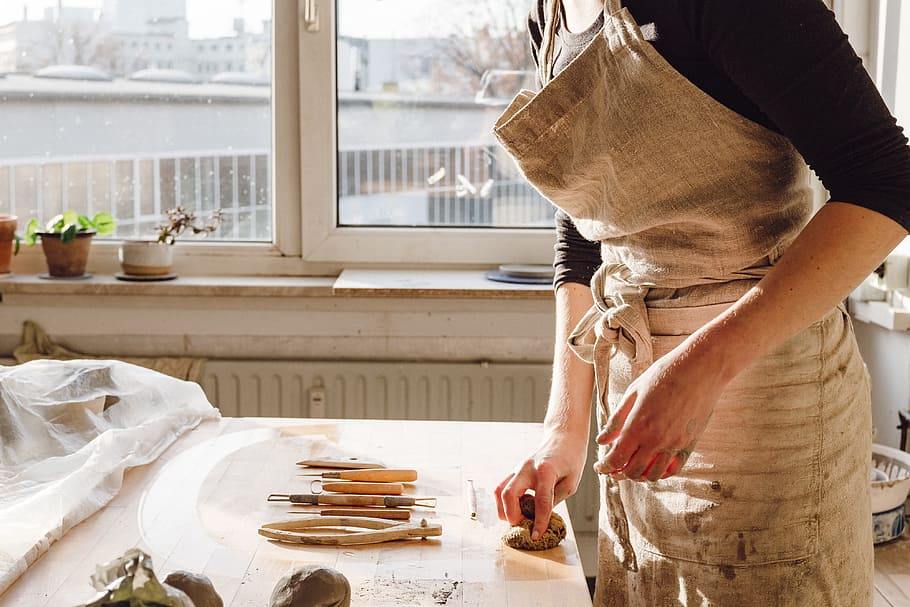If you stumble across a worn-down furniture piece that just could use some restoration, it’s important to understand what this endeavor requires. Taking on a furniture restoration project takes specific skills, knowledge and a lot of elbow grease and sweat equity to make it good as new. However, you also want to ensure the piece is promising and capable of being restored in the first place. The same goes for your home’s existing furniture, too.
So before you break out the sander and stain, ask yourself: Is the piece worth the hassle or should it be donated? If you’re unsure, here are some pointers to get you started in the right direction, along with 10 dos and don’ts to keep in mind when restoring furniture.
DO Tend to Any Framework that Needs Mending
Once you decide to restore a furniture piece, take a look at its bones. Restoring furniture is not just lipstick and rouge and requires more than painting and staining. You also need to mend any structural issues. Having an unstable framework can cause more damage in the long run, so make sure the furniture legs are stable. If you have a leg that wobbles a bit, be sure to fasten new furniture hardware or realign it so it’s extra sturdy and supportive.
DO Clean Furniture First
You’d be surprised what a thorough cleaning can do for a neglected furniture piece. So before breaking out the sandpaper and finish, put in some elbow grease and remove dirt and grime build-up. If you don’t want to go the whole mile, only to find out it will need a total refinish, clean and polish up a section to see what lies beneath. Then, you can decide from there.
DO Consider a Fresh Paint or Refinish
Consider giving your furniture restoration a fresh coat of paint and refinish. However, only do so if your skills are up to snuff. The sanding and prep work is just one part of this, and that alone takes artistry and expertise. Again, if you’re unsure, take it to a professional to get the job done right.
This goes especially for furniture pieces with high-gloss surfaces, such as Meltamin or lacquer. A professional can give it a factory-spray finish. Otherwise, you might find the paint peeling, unable to adhere.
DO Donate or Recycle Furniture
If you have furniture pieces that you’ve fallen out of love with, donate or recycle them. Don’t simply throw them out! Even if it has good bones, you might decide it’s not worth restoring due to its decor style. Let someone else take it off your hands and give it new life. There are many ways you can donate, recycle or up-cycle furniture.
DO Seek Professional Restoration Services
If you come across a furniture restoration that feels out of your wheelhouse, seek out the services of a dedicated professional restorer–even more so if it’s a family heirloom. If you’re experienced enough to take on the restoration project, that’s wonderful! But if you have any doubts about your ability, even if it’s for just one portion of the project, find a reputable restorer who specializes in what needs to be done. From upholsterers to cane weavers, you’ll find restoration specialties in practically everything.
DON’T Be Turned Off by Flat Stuffing
Don’t be turned off by an upholstered piece with flat stuffing. The filling can easily be replaced and fluffed, giving it a new cozy seat. So, whenever you find a furniture piece with good bones and structural integrity but just needs a plumper cushion, keep this in mind.
DON’T Paint or Refinish Too Quickly
Restoring furniture is a tedious process that requires plenty of patience. And one of the steps that requires ultimate patience is painting and refinishing. During this step, take your time, ensuring that the paint or finish is applied smoothly. Once you are done, you must be patient even further, waiting for the paint or finish to cure properly–even if it takes days.
DON’T Rip Off Old Upholstery
Restoring furniture often calls for new upholstery, but you need to be mindful when removing the older fabric. Instead of eagerly ripping it off to begin your project, remove the old upholstery methodically, taking photos along the way. Essentially, you want to create a strategy for reupholstering it and snapshots can help guide you in the process with a step-by-step breakdown you will copy in reverse. In addition, you want to ensure you do not break anything as you remove and reupholster the furniture piece.
DON’T Use Harsh Cleaners or Abrasive Scrubs
Clean your furniture restoration project with non-abrasive, all-natural products. Use a sponge, warm water and vegetable-based oil soap. Reach detailed trims, moldings and other nooks and crannies with a soft-bristle toothbrush. For stubborn greasy spots or a waxy build-up, scrub the area ever-so-lightly with the finest 0000-grade steel wool, being careful not to dull the finish.
DON’T Forget Personal Safety
Last, but certainly not least, be mindful of your personal safety! Restoring furniture requires the use of not only sharp tools, but also harmful chemicals that you can breathe into your lungs, causing invisible damage over time. So before you embark on your restoration journey, gather all the proper safety equipment and gear you might need. Also, make sure to work in a ventilated space, such as an open garage or shed.
Here are a few safety items to consider, depending on the project at hand:
- Long-sleeved clothing to protect you from harsh chemical burns (like wood strippers and varnish).
- Gloves to protect your hands from splinters and chemicals.
- Safety glasses to protect your eyes from splinters and debris, like particles from sanding.
- Dust masks to protect you during sanding steps and even from fumes and vapors.

